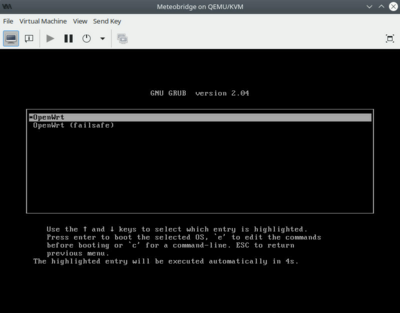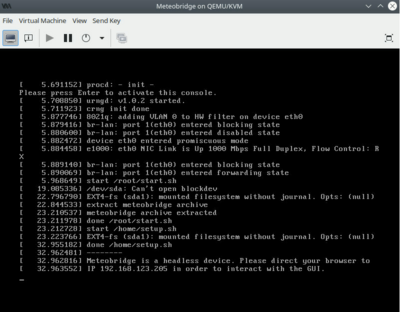Meteobridge VM
Meteobridge sets itself apart from other weather monitoring solutions on PCs that it is thought as a dedicated appliance, running independently from your desktop and by that not being impacted from desktop shutdowns, OS changes etc. We still believe the "dedicated appliance" idea is the way to go. Therefore, in the foreseeable future there will not be a Meteorbridge package you can install on your desktop as the many other weather monitoring programs do. With the increasing popularity of virtual machines there is now an easy way to install Meteobridge as a dedicated appliance on your virtualization environment (VMware, Virtualbox, KVM, Proxmox to name the four most popular ones). We call this "Meteobridge VM" which is provided as a disk image that be started within a virtual machine on your server.
Limitations
Meteobridge VM is provided for x86_64 only (no ARM, no Apple silicon, no RPI) as we see this platform as the dominant virtualization environment and cannot afford to fork into various platforms. Meteobridge VM disk image provides 16GB of storage for data. This is fairly enough for many years of data. Disk partitions can be expanded but, this is a rather complicated process. Therefore, it is recommended that you stick with the 16GB for now and start developing thoughts about more, when storage is at risk to run out.
Meteobridge VM needs a regular license (after 14 days of free trial period). Meteobridge licenses used with a Meteobridge VM are not interchangeable with Meteobridge licenses for HW platforms (TP-Link, RPI, etc), but can be migrated between Meteobridge VM setups. Licenses used with Meteobridge VM apply to the same rules as licenses used on HW platforms. They are perpetual and provide 2 years of free updates. After 2 years it needs an update licenses to get access to newer versions of Meteobridge VM; this is optional, not mandatory. You can find more details on Meteobridge licensing here.
Meteobridge Licenses (for VM or physical platforms) can be purchased here.
How to Install
First you have to setup your virtualization environment of choice. Please consult the documentation of your virtualization solution for this first step. As Meteobridge VM should be visible within your LAN and needs to reach out to the Internet it is important that the virtualization environment does not isolate the Meteobridge VM by firewall rules. When you encounter network problems with your Meteobridge VM, please check firewall related data blocking first. We had initial problems to get it working on a Windows environment because of Windows firewall rules enabled by default. These problems are not specific to Meteobridge VM, they are related to setting up a virtualization environment properly.
The next chapters show installation examples for the most popular virtualization environments that are intended to show how to get a Meteobridge VM installation right.
Meteobridge VM on KVM
First step is that you download the KVM/QEMU compatible disk image here. File is in "gzip" format and needs to be decompressed first. Result is a disk image file of about 16GB in size named "meteobridge-mbx86-v1.0-16G.img". Next steps are related to build the Meteobridge VM within KVM absed on this disk image.
- Access the KVM Virtual Machine Manager and define a new VM

- Select mode "Import existing disk image"
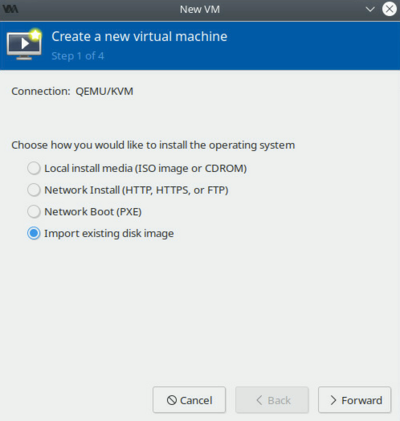
- To provide an existing storage path, press the "Browse..." button
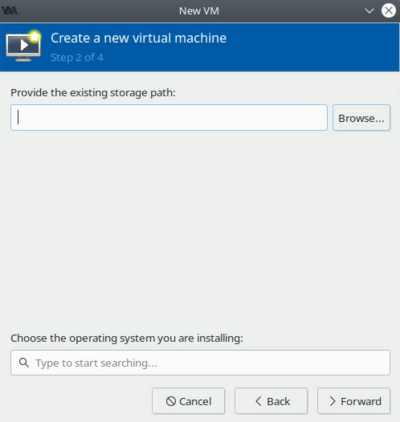
- Select a storage pool from the left. "default" might be a good choice unless you have not defined a specific one for your VMs. Having selected the VM pool your will see a list of already defined VMs. You also see the physical location of the VM pool. Here it is "/var/lib/libvirt/images".

- No go to your command shell and generate a new folder for Meteobridge in your VM pool. On linux doing so looks like this (you may need to be root to do so, therefore the preceding "sudo"):
sudo mkdir /var/lib/libvirt/images/Meteobridge
- Next the downloaded and decompressed Meteobridge disk image file needs to be copied into this folder.
sudo cp /path-to-where-you-downloaded-the-file/meteobridge-mbx86-v1.0.img /var/lib/libvirt/images/Meteobridge/
- To make the newly created directory available press the reload circles besides the "Volumes" label. In the example "Meteobridge" now appears as a new volume.
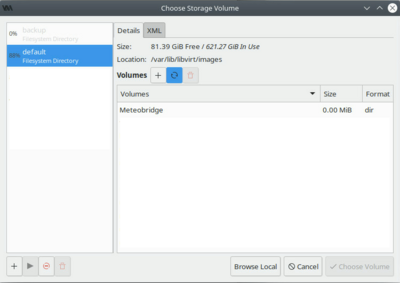
- Press "Browse locally..." button and navigate with help of the "Filesystem" entry down to the Meteobridge VM image file. For orientation you see the stepping down into folders on the top line. When you finally reach the image file, select it and press "Open"
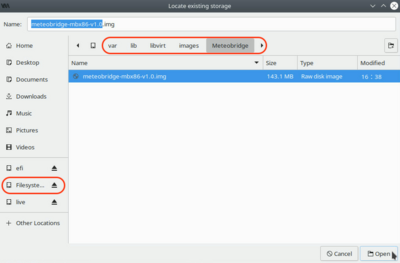
- Being back to the calling menu, please insert "other" into the search bar. A dialog presenting item "Generic default (generic)" will pop up. Double click the entry.

- Now you are back to the calling menu with the information filled in as in the example below. Press "Forward".
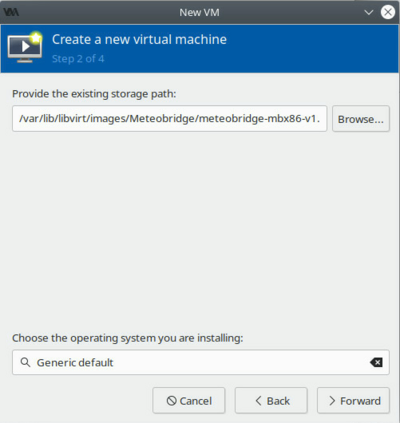
- KVM now needs some additional information for setting up the VM. Select 256 MB for RAM and 1 processor (this will be perfectly fine for Meteobridge). Then press "Forward".
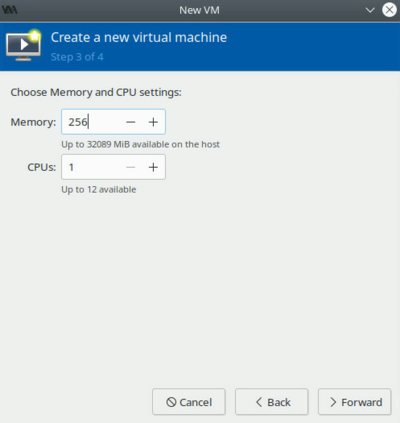
- Last step is to give the new VM a name, please check that "Bridge" is selected as network option (should be default) and "Customize configuration before install" to do some additionel settings later on. Then press "Finish".
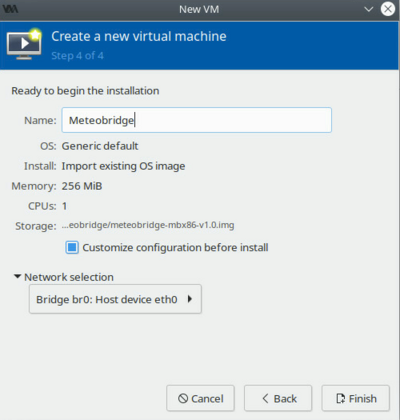
- It will only take a few seconds to build and start the VM. You will see the VM starting into the GRUB boot loader and then booting automatically. The booting is done when Meteobridge VM does tell you the IP where to reach the Meteobridge GUI in your LAN.
